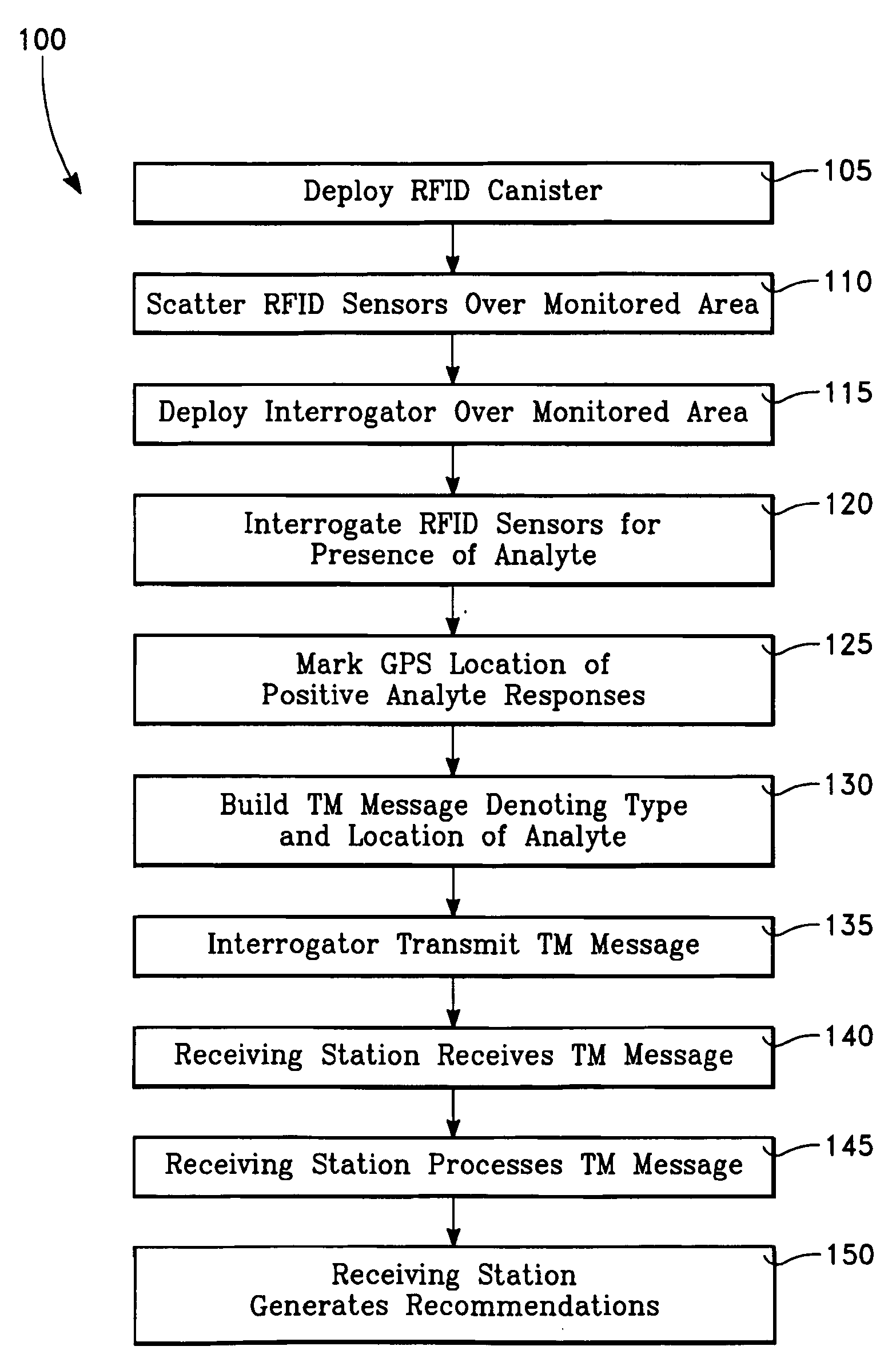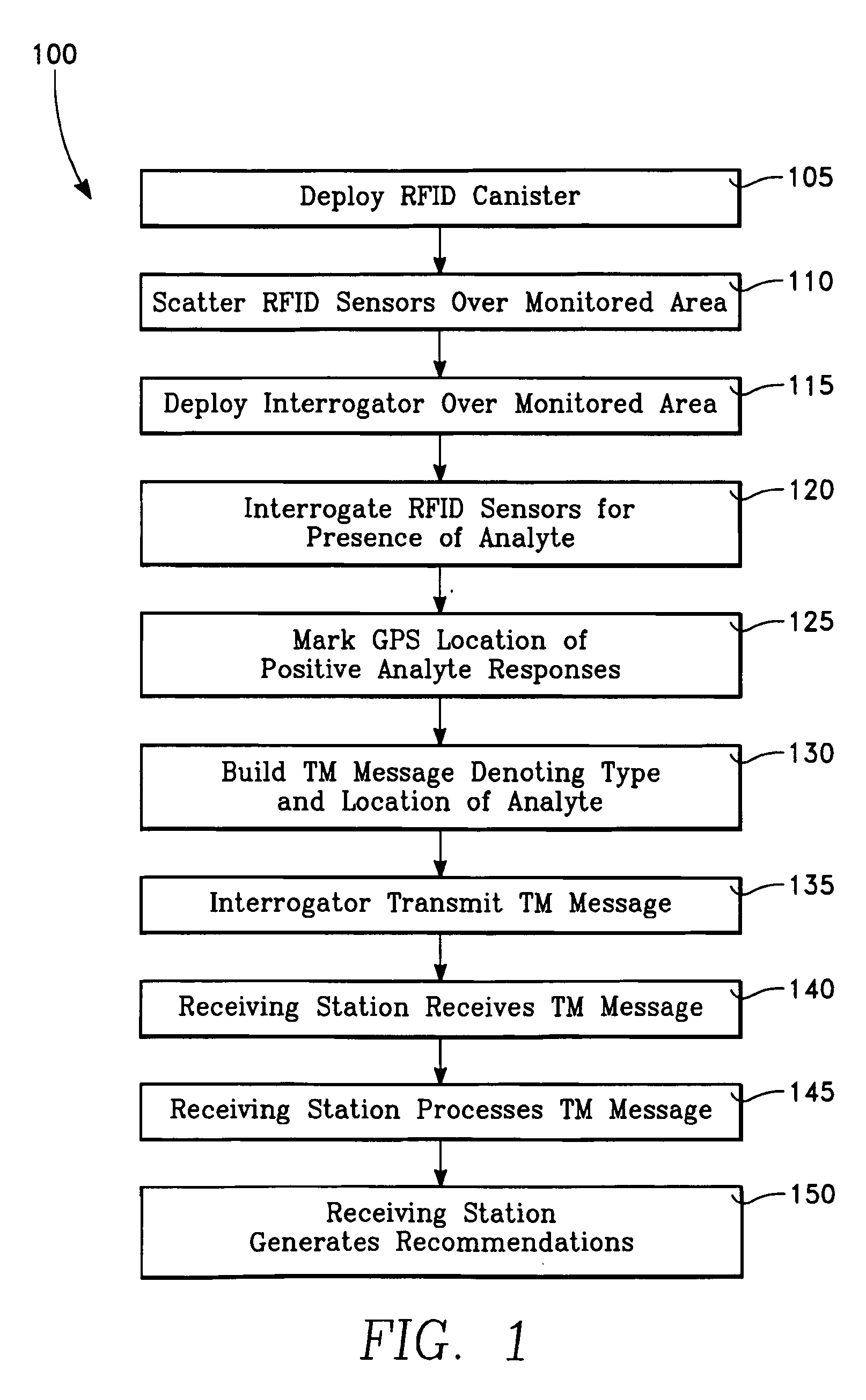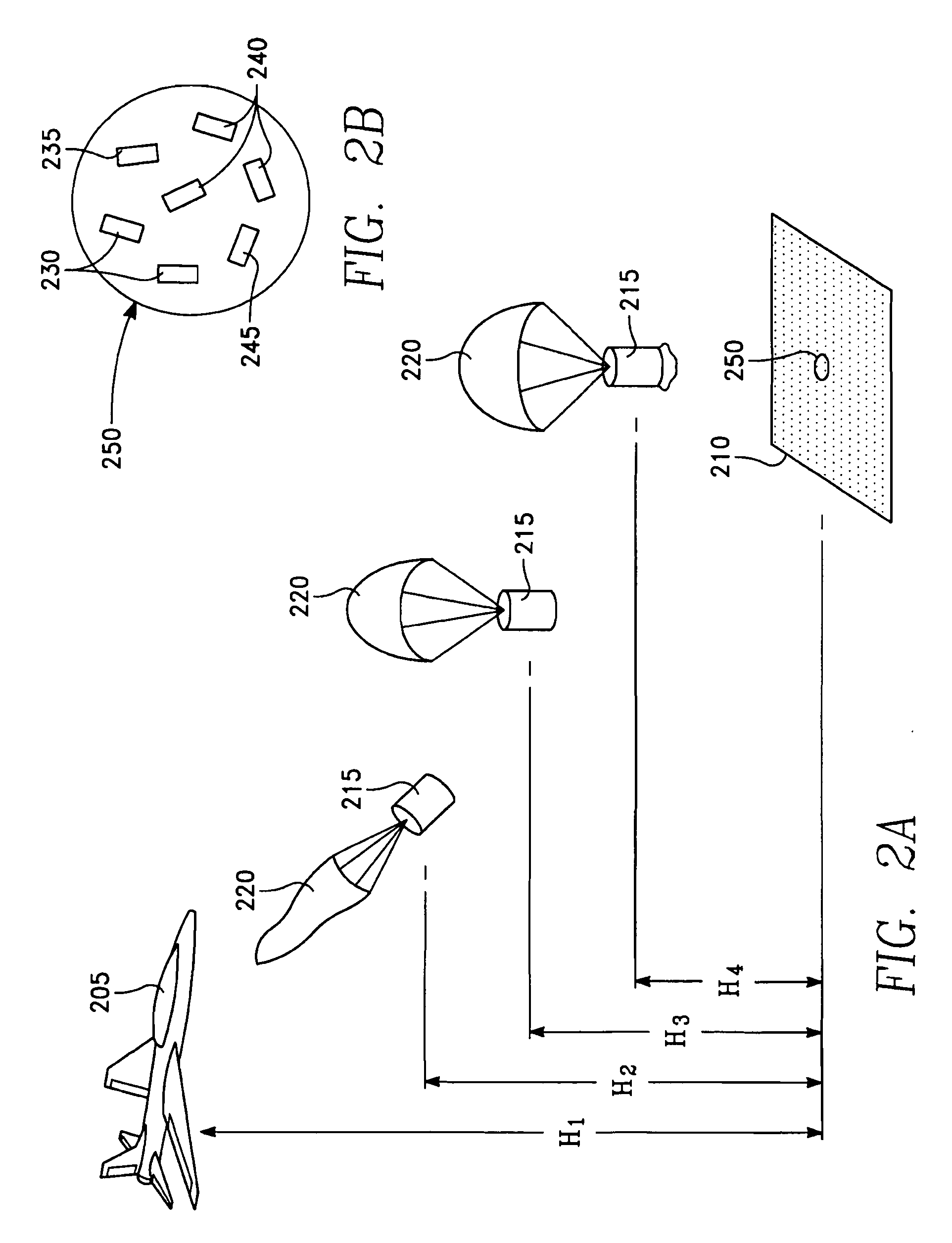Airborne Deployed Radio Frequency Identification Sensing System to Detect an Analyte
a radio frequency identification and sensing system technology, applied in direction finders using radio waves, instruments, reradiation, etc., can solve the problems of extending itself to be exploited, not developing a set of recommended actions, etc., to increase the probability of mission success
- Summary
- Abstract
- Description
- Claims
- Application Information
AI Technical Summary
Benefits of technology
Problems solved by technology
Method used
Image
Examples
Embodiment Construction
[0023]Referring to FIG. 1, shown is a high level functional block diagram 100 generally describing the major functions of an airborne passive radio frequency identification system (RFID). The passive RFID system is used to identify an analyte that is present in a forward area slated for occupation by combat or security forces. The operation of the passive RFID system begins with the deployment of a canister (step 105) filled with a plurality of RFID sensors set to sense an analyte. The RFID sensors are scattered throughout the area to be monitored (step 110) during the final stages of the canister deployment. Once the RFID sensors are scattered throughout the area to be monitored, an interrogator is deployed in a spiral pattern (step 115).
[0024]An analyte is any substance detectable by any of the scattered RFID sensors. Examples of hazardous substances are explosive agents, chemical agents, biological agents or nuclear radiation. An example of a non-hazardous substances are known ch...
PUM
 Login to View More
Login to View More Abstract
Description
Claims
Application Information
 Login to View More
Login to View More - R&D
- Intellectual Property
- Life Sciences
- Materials
- Tech Scout
- Unparalleled Data Quality
- Higher Quality Content
- 60% Fewer Hallucinations
Browse by: Latest US Patents, China's latest patents, Technical Efficacy Thesaurus, Application Domain, Technology Topic, Popular Technical Reports.
© 2025 PatSnap. All rights reserved.Legal|Privacy policy|Modern Slavery Act Transparency Statement|Sitemap|About US| Contact US: help@patsnap.com



